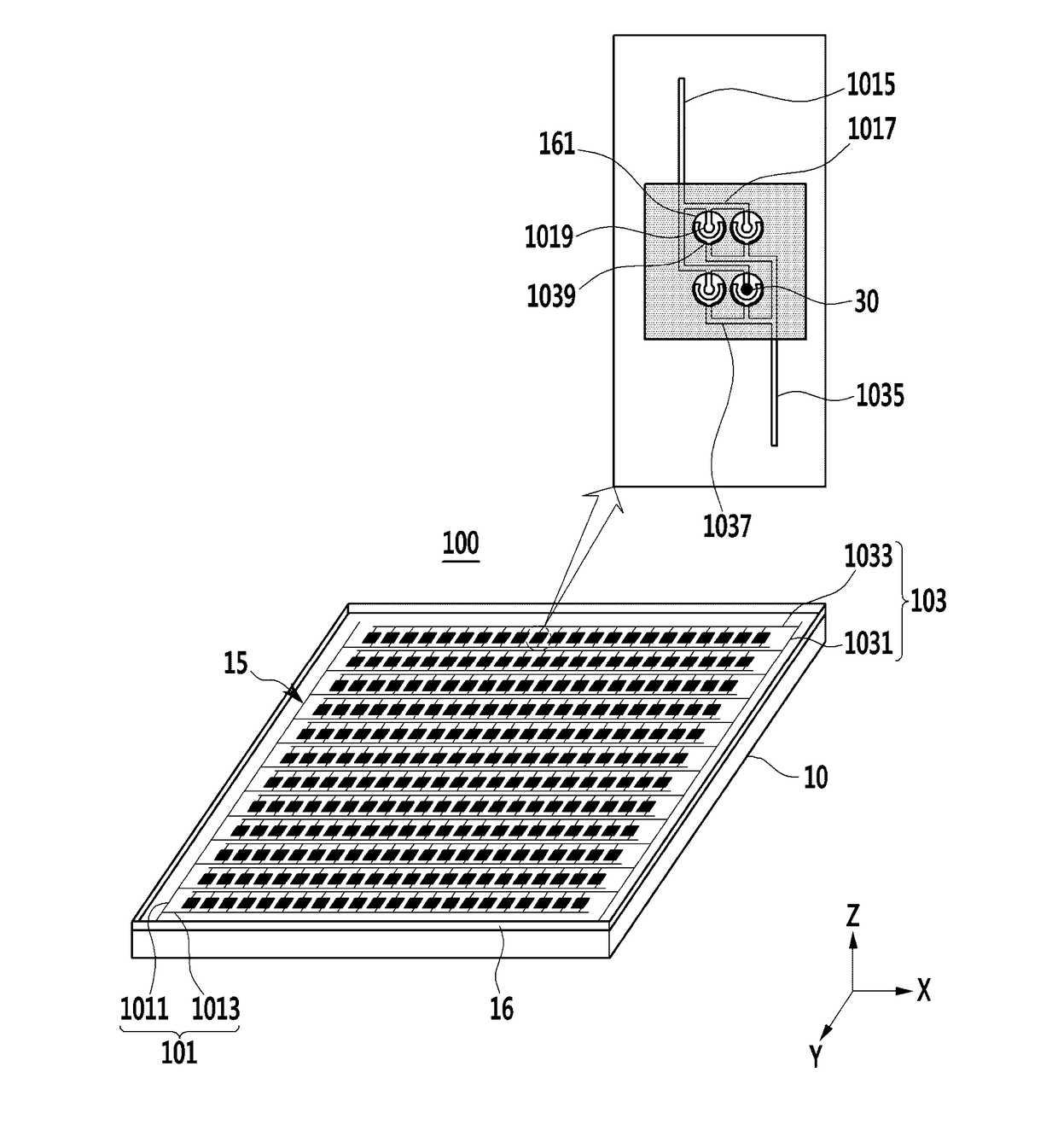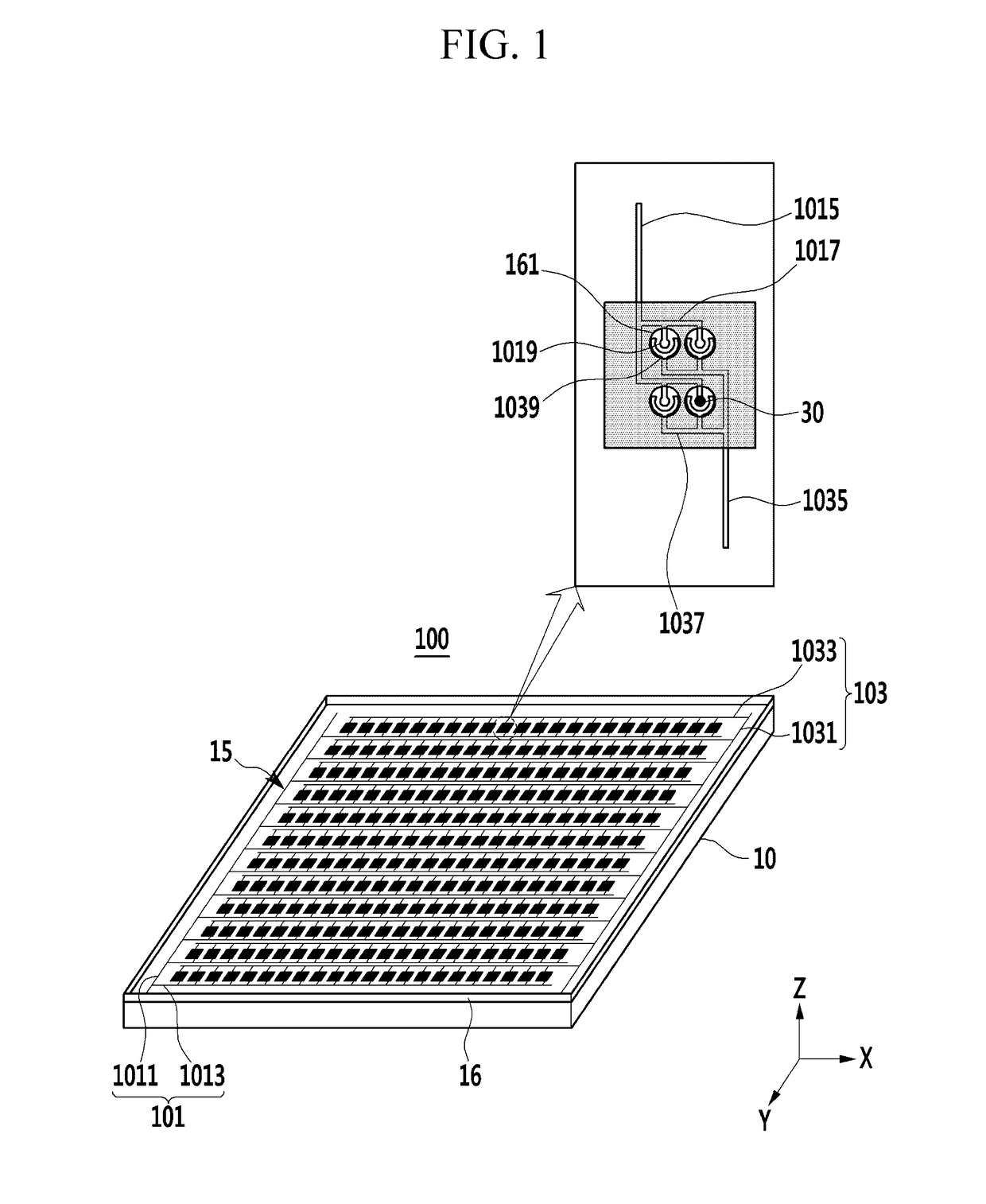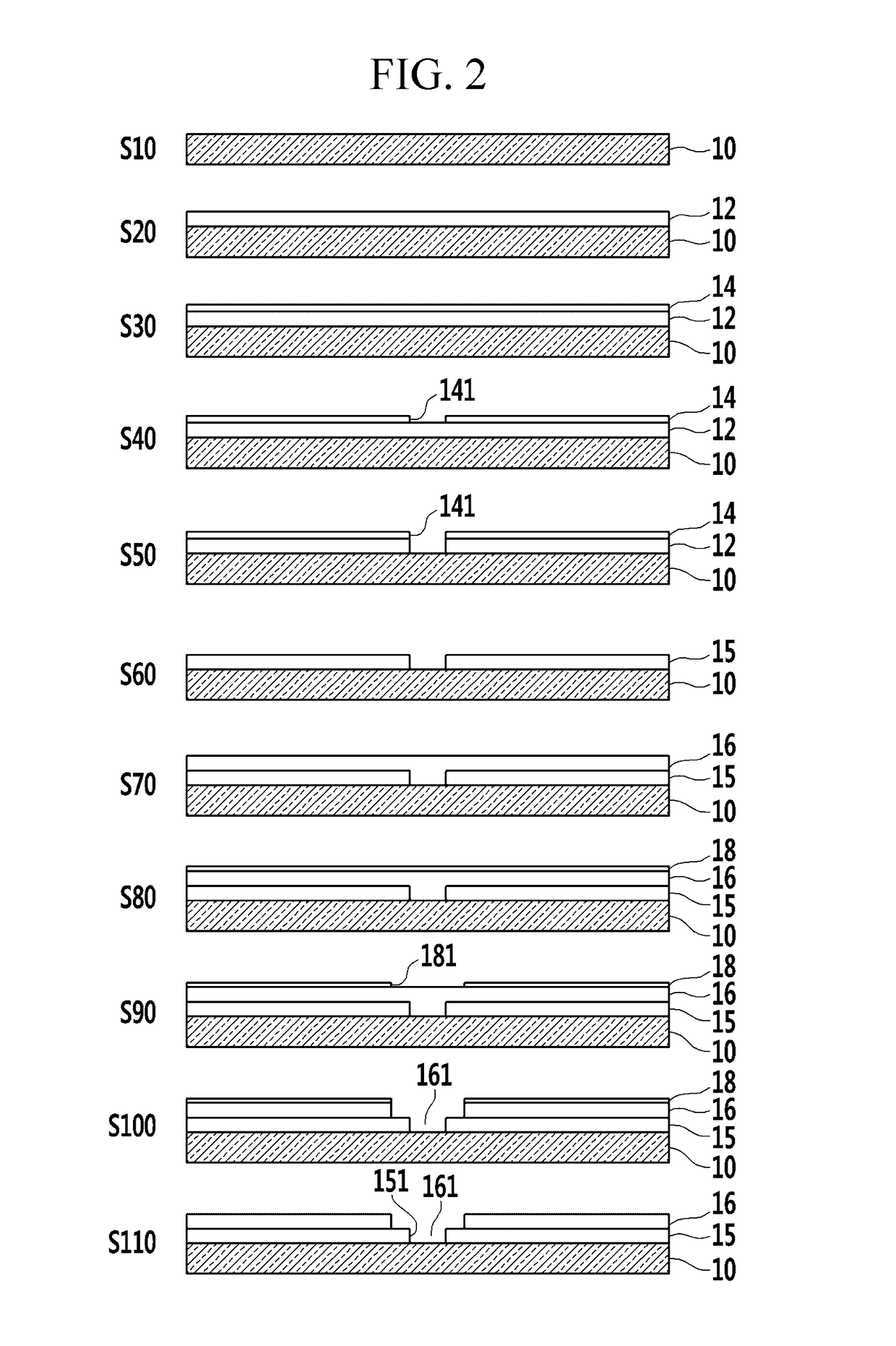Ultra-highly sensitive electrochemical biosensor using beads and method for manufacturing the same
- Summary
- Abstract
- Description
- Claims
- Application Information
AI Technical Summary
Benefits of technology
Problems solved by technology
Method used
Image
Examples
experimental example
Biosensor Manufacturing Experiment
[0070]A biosensor with a 10×10 array was manufactured. Two electrodes were manufactured by depositing Ti / Pt (10 nm / 100 nm) on each sensor part of the biosensor. Further, holes were patterned by using SU-8 so as to capture magnetic beads around the electrodes. A diameter of the patterned hole was about 4 μm and when the magnetic bead having a diameter of about 2.8 μm was used, the biosensor was manufactured so that one to three magnetic beads may be captured at each hole.
[0071]In the present experimental example, an experiment for detecting AβO, which is important for early diagnosis of Alzheimer's disease, was conducted. When the AβO is used in the actual experiment, a characteristic thereof is not stable, so that efficiency of the biosensor is verified by using an oligomer mimicking standard protein (OMSP) describing the AβO. The magnetic beads were introduced by using the micro channel members after an antibody, an HRP, and the OMSP for each conce...
PUM
 Login to View More
Login to View More Abstract
Description
Claims
Application Information
 Login to View More
Login to View More - R&D
- Intellectual Property
- Life Sciences
- Materials
- Tech Scout
- Unparalleled Data Quality
- Higher Quality Content
- 60% Fewer Hallucinations
Browse by: Latest US Patents, China's latest patents, Technical Efficacy Thesaurus, Application Domain, Technology Topic, Popular Technical Reports.
© 2025 PatSnap. All rights reserved.Legal|Privacy policy|Modern Slavery Act Transparency Statement|Sitemap|About US| Contact US: help@patsnap.com



